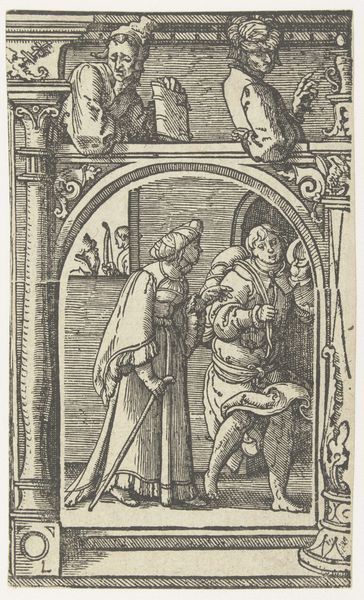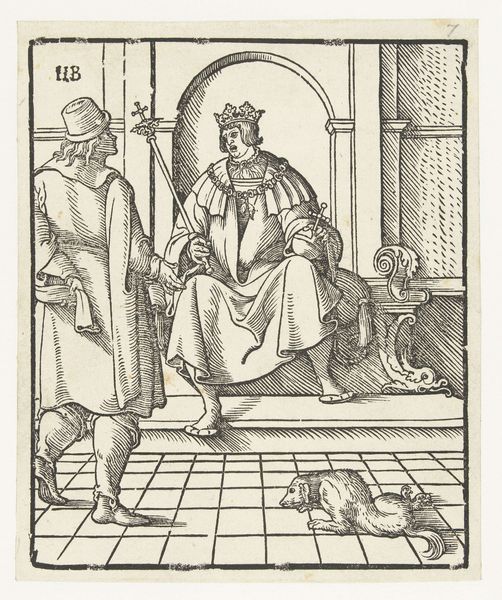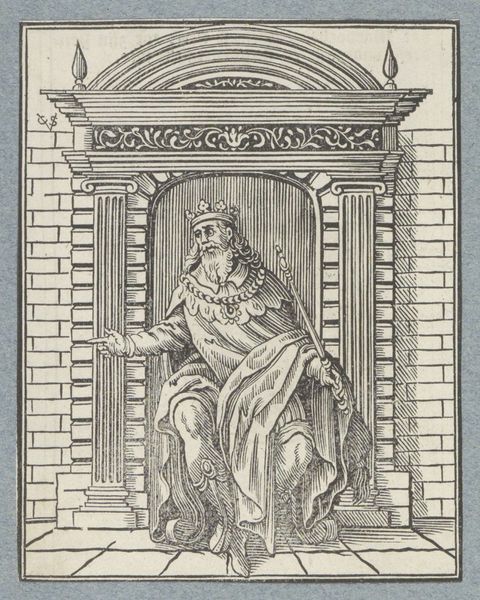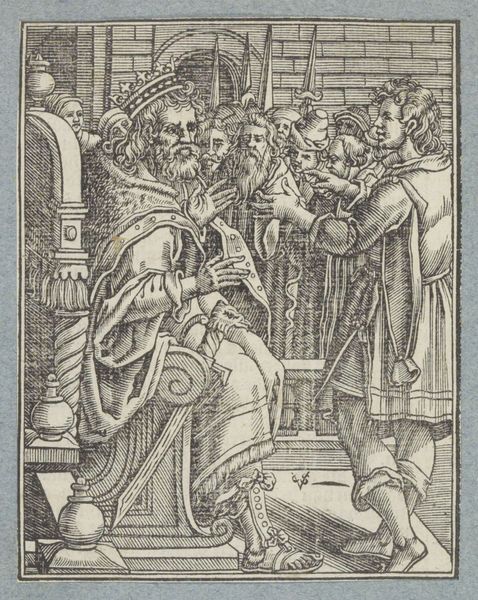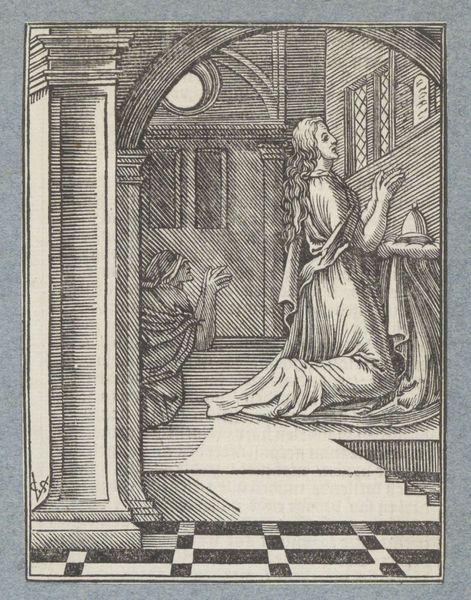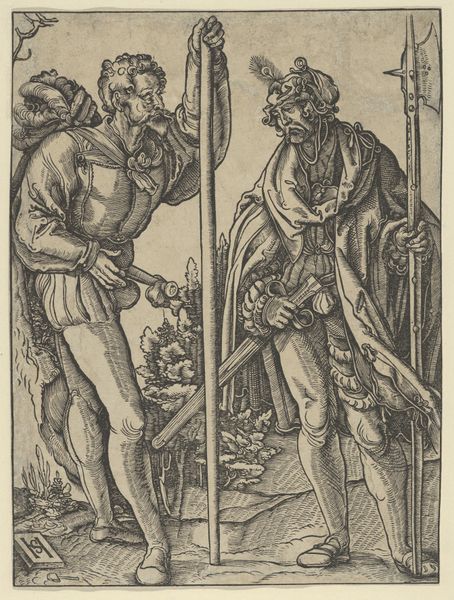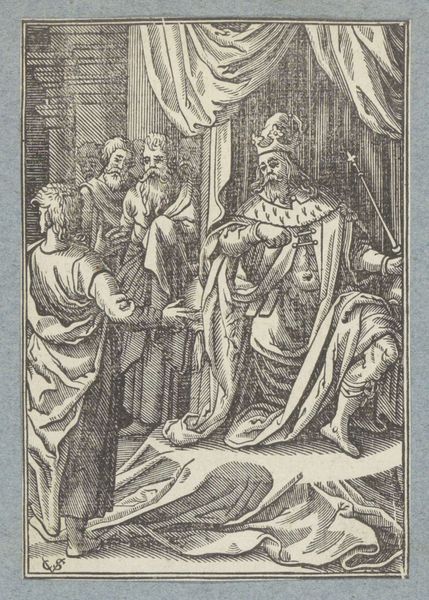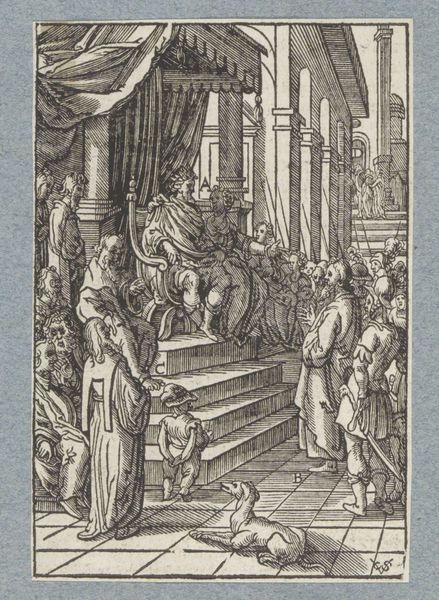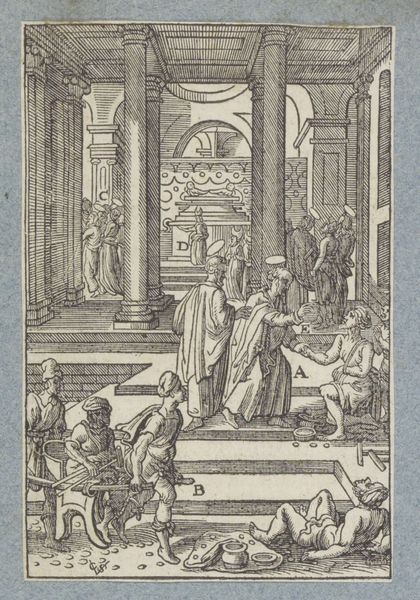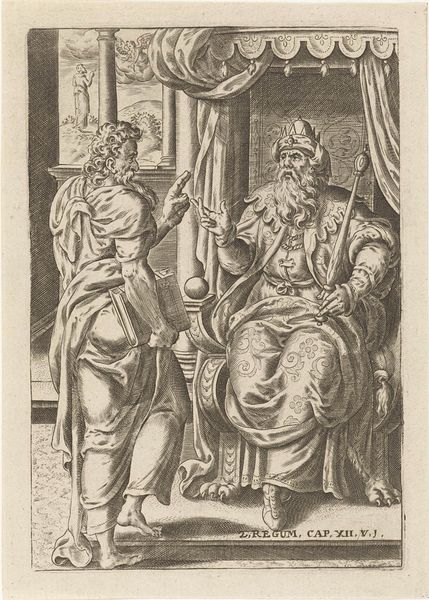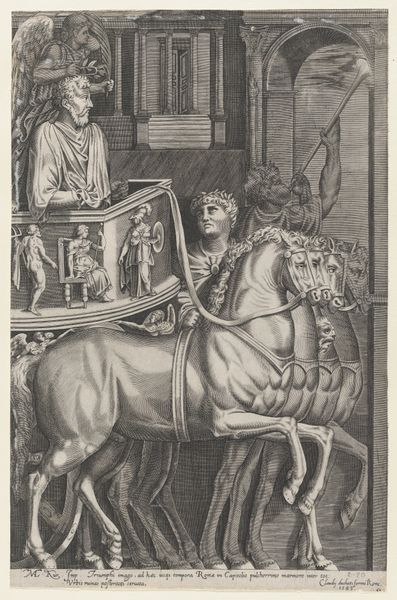
drawing, print, paper, ink, engraving
#
drawing
#
narrative-art
#
baroque
# print
#
figuration
#
paper
#
ink
#
history-painting
#
engraving
Dimensions: height 108 mm, width 80 mm
Copyright: Rijks Museum: Open Domain
Curator: Welcome. We are standing before "Davids lofzang", or "David's Hymn of Praise", created between 1645 and 1646 by Christoffel van Sichem II. It's an engraving, ink on paper. Editor: It has a stark, almost severe quality, wouldn't you say? The monochrome palette combined with those precise, sharp lines gives it a striking visual intensity. It almost feels theatrical, despite its small size. Curator: Indeed. Van Sichem employed tight, controlled hatching to construct volume and shadow. Note how the architectural background, with its receding arches and fluted columns, is meticulously rendered to emphasize depth, thus directing our gaze towards the figure of David at the center. Editor: That central figure… he’s framed, not only by the architecture, but by his role as a divinely sanctioned leader, composing the psalms. I see in his downcast eyes and steady pace a man shouldering not just a harp but the mantle of religious and political authority at a time when both were fraught with complex questions about power and representation. Curator: Very perceptive. The deliberate lack of ornamentation focuses our attention on David's expression and the construction of the narrative. The Baroque influence is present, though notably restrained, in the subject matter – a key Old Testament scene that showcases faith, kingship and artistic creation itself. Editor: And yet, the starkness undercuts any glorification, highlighting the burdens of leadership. The soldiers huddled in the background remind us of the cost. Van Sichem prompts reflection on how authority intersects with sacrifice and creation. I cannot overlook the history here—the political undertones present in image making within Dutch religious contexts. Curator: Yes, and the meticulous craft reminds us of the importance that Baroque artists placed on skilled execution and conveying religious content with clarity and precision. Its linear quality also brings graphic narrative tradition into focus. Editor: It serves as a potent reminder that art objects don’t emerge in a vacuum, but resonate within deeply intertwined sociopolitical and religious tapestries, as much then as now. Curator: Precisely. Hopefully, exploring both form and content gives a more well-rounded experience for our listeners today. Editor: I would agree. It encourages everyone to consider visual art as not just something pretty to look at but as a vibrant record and an active participant within culture itself.
Comments
No comments
Be the first to comment and join the conversation on the ultimate creative platform.
